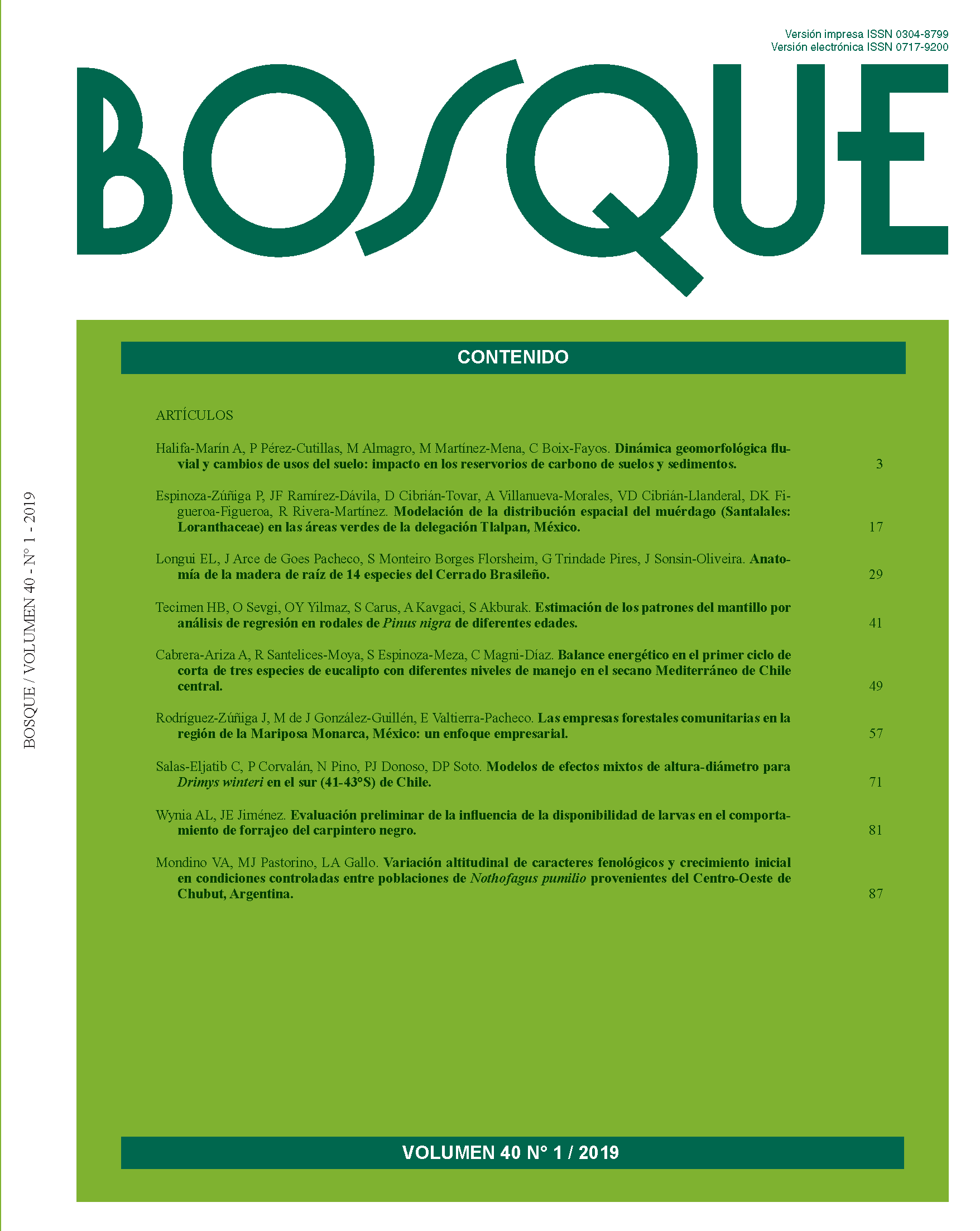Preliminary assessment of the influence of larvae availability on the foraging behavior of Magellanic woodpeckers
Main Article Content
Abstract
The largest South American woodpecker, the Magellanic woodpecker (Campephilus magellanicus), as well as its habitat, Nothofagus spp. old-growth forests, are declining throughout their range. We mapped beetle larvae in two lenga (N. pumilio) trees on Navarino Island, Chile, to better understand prey availability and infer what factors might affect woodpecker foraging behavior. We further compared larvae locations with woodpecker foraging holes to infer prey accessibility. We extracted 35 total larvae from Cerambycidae and Lucanidae families and identified one Cerambycidae (Microplophorus magellanicus) and one Lucanidae (Erichius femoralis). Maximum woodpecker excavation depths were 71-90 mm; most larval gallery depths were 51-70 mm. Further research should examine tree characteristics associated with accessible larval prey to enable decision makers to make informed decisions for Magellanic woodpeckers’ management and conservation.

